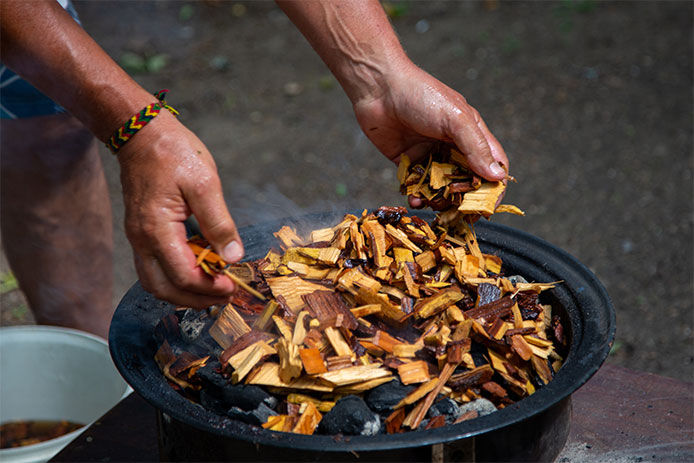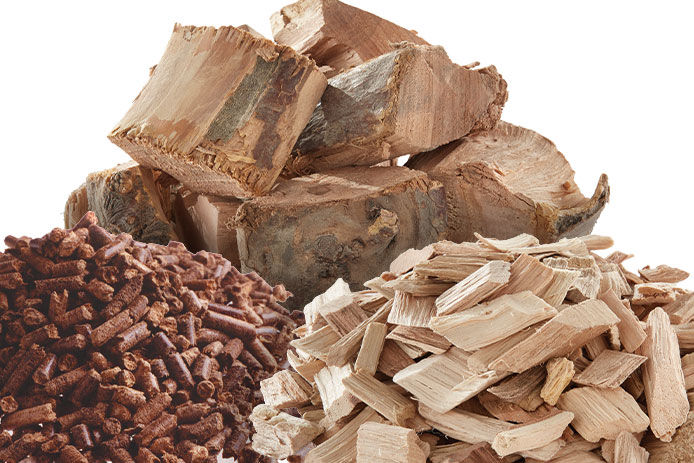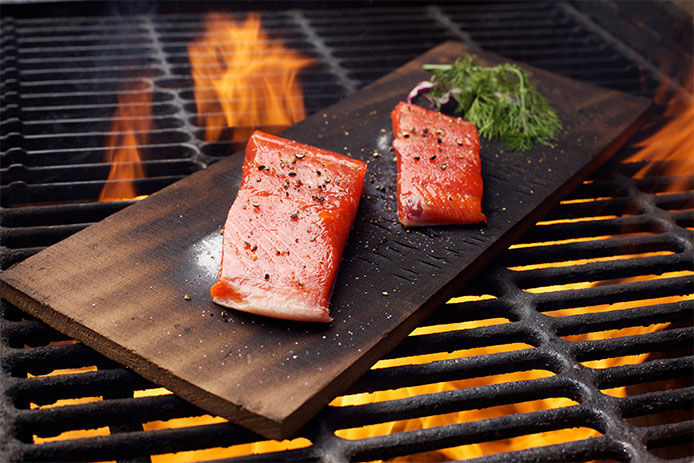While do-it-yourself projects can be fun and fulfilling, there is always a potential for personal injury or property damage. We strongly suggest that any project beyond your abilities be left to licensed professionals such as electricians, plumbers, and carpenters. Any action you take upon the information on this website is strictly at your own risk, and we assume no responsibility or liability for the contents of this article.
How to Incorporate Wood into Your Grilling Repertoire

Grill season is almost here and we’re getting excited for a summer filled with delicious BBQ meals. This summer explore stepping up your grilling game by incorporating wood into your grilling repertoire. Wood is a fun and tasty way to make your food more interesting as it adds a different dimension of both technique and taste to your grill experience. The truth is, wood was the way to cook meat over a fire for centuries until charcoal became the norm about a hundred years ago. Cooking over wood is one of the oldest traditions in human history, so wood cooking gets back to time-tested basics when it comes to grilling your food. Whether your grill is gas or charcoal, incorporate wood to fire up your summer grilling.
Why Wood

You may be wondering why wood is the grill secret you’ve been missing out on all these years. Wood is a favorite amongst hardcore grill masters for its unique heat capacity and flavor profiles. Whether you are cooking on a gas or charcoal grill, adding wood to the mix is a great way to add more flavor complexity to whatever you are cooking. Different wood also holds heat differently, making it an interesting way to explore how to cook your meat according to your liking. Similarly, different wood also lends different flavors. While charcoal and gas flames can be great for offering an amazingly consistent heat source for cooking, they contribute very little in flavor. Wood, however, does and can play a huge role in creating the flavor profiles and taste experience that you’re looking for. The varying secondary properties of wood are what make them such natural food flavor enhancers when burned.
Types of Wood

Hickory brings bold and rich flavors to steaks while alder imparts a light smokiness perfect for fish. Mesquite gives the pungent and unique flavors of Tex-Mex barbeque, while camphor laurel offers the exotic tastes of the Far East. The type of wood you choose to BBQ with can change the entire flavor and experience of your meal. The best choice of wood to use is going to depend on what you’re cooking and how you’re cooking it. As a general rule, hardwoods such as oak and maple produce rich colors and bold aromas whereas softwoods such as fir and pine produce softer flavors. There are generally 13 types of wood used for grilling: applewood, alder, camphor, cherry, heather, hickory, juniper, maple, mesquite, oak, pecan, straw, and walnut.
- Applewood is famous for smoking bacon due to its sweet, fruity, mild, and ashy smoke flavor that gives a nice yellow and brown coloring to whatever you’re cooking. Perfect for grilled pork or anything else that could use a slow and low style of cooking.
- Alder is great for seafood as it offers a milder flavor and nice golden hues that are perfect for the flavoring of fish. This smoke flavor is delicate, subtle, and slightly sweet. Use alder planks to cook your fish on so you can explore grilling even softer white fish that wouldn’t typically survive grill grates.
- Camphor is exotic and pungent and gives a far eastern punch to whatever you’re grilling. Traditionally used for smoking duck or other poultry for a spiced and browned result.
- Cherry is bold and earthy and wildly popular for cooking salmon and other seafood. Like other fruit trees, it offers a fruity and delicious smoke flavor.
- Heather is not as common but offers a unique fragrance and light color to seafood.
- Hickory is a wood grilling favorite and is super popular for grilling for its robust and distinct flavor profile and rich dark brown color.
- Juniper is a bold and rich balsamic flavor that should be used sparingly but produces a lovely medium brown coloring.
- Maple is lightly smoky and subtly sweet and gives a golden yellow coloring that is perfect for just about anything.
- Mesquite is the distinct flavor that is well-loved for its strong smoke that is unique to Tex-Mex BBQ.
- Oak is the classic bold and smoke flavor that is used for classic Texas-style meat.
- Pecan is similar to hickory in its smoke and is used for its pungent flavor and long and slow burn.
- Straw is a delicate and lightweight smoke that is great for mild fish and seafood.
- Walnut offers a heavy and dense smokey flavor and dark brown color. This is ideal for beef, pork, and wild game meats.
Ways to Use Wood

The most common concern around using wood as a heat source for cooking is that it doesn’t get hot enough or hold heat well enough to properly cook meat. However, with the right wood and a little technique you can trust that wood-grilled food will still provide the right amount of heat to sufficiently cook your hamburgers, steaks, chicken breasts, or vegetables.
Wood can be incorporated into your grilling experience in many different ways. From wood chips to wood planks, wood chunks mixed with charcoal to just plain wood, there are many ways to incorporate wood into your grilling to get the result you’re looking for. One of the most popular ways to use wood is to mix charcoal and wood so you get the heat consistency of charcoal while also enjoying the added flavor of wood. If you have a gas grill use wood chips instead and wrap them in a smoker box or loosely in a sheet of aluminum foil with holes punched in it where the smoke will come out. Place the packet of wood chips directly over the burner. It will start smoking in about 15 minutes and should be removed halfway through cooking. Wood planks can also be used by setting the meat or fish on the plank and putting it directly over the heat source for cooking.
Explore these different woods and wood-grilling techniques this summer season to discover the wood grilling style that works best and is most delicious for you.